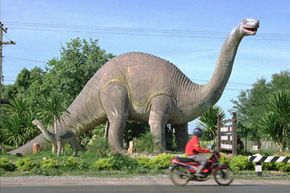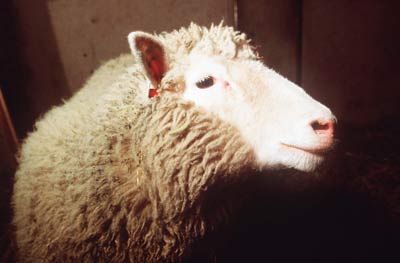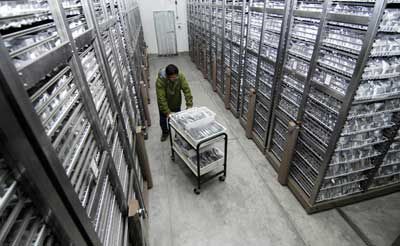Sure, "Jurassic Park" is ultimately a cautionary tale about out-of-control genetic science (and equally out-of-control prehistoric carnivores), but let's face it: You still wish it was real. You yearn to peer out the window of an SUV and watch a Tyrannosaurus rex lumber into a clearing. Deep inside you, there's a hole that can only be filled by pointing a Canon PowerShot at a diplodocus.
Unfortunately, wanting it doesn't make it real. Remember Michael Crichton's explanation about how prehistoric mosquitoes trapped in amber (fossilized tree resin) have dinosaur blood in their bellies? All you have to do is tap them, right? Yet as elegant as that sounds, the premise presented a few problems. For starters, even DNA preserved in amber degrades over several million years. If fragments of dinosaur DNA survived the passage of time, they might mix with insect DNA during extraction.
Advertisement
The scientists of "Jurassic Park" get around the problem of missing DNA by filling in the missing pieces with frog DNA. That might fill a plot hole, but the gaps in a dinosaur's genome are a different matter. Even if frog DNA were the best choice to fill the gaps, the chances of actually pulling it off are astronomical.
But let's say you actually lucked out and reconstructed the entire dino genome, and the chances of that are seriously slim. At this point, you'd have to come up with a way to transform the DNA into chromosomes. If you pulled that off, you'd have to find a place to implant them. The ideal place would be a living dinosaur egg, which we don't have. At a bare minimum, vertebrates require the egg and cytoplasm of a closely related species, and no living creature on Earth fits that description.
Don't give up hope just yet, though. In his book "How to Build a Dinosaur: Extinction Doesn't Have to Be Forever," American paleontologist Jack Horner proposed flipping certain genetic levers in chicken embryos to induce dinosaurlike anatomical features in the hatchling. The idea is that, if dinosaurs evolved into modern-day birds, then some of those initial traits remain at a genetic level; those genes simply aren't expressed or "turned on." Scientists still have a way to go toward fully understanding the possibilities, however, and no amount of genetic tinkering will turn a chicken embryo into a 30-foot (9 meter) stegosaurus.
Another option is to pine for something a little different than "Jurassic" Park -- like maybe Pleistocenic Park. This is because scientists put far more stock in cloning the likes of a woolly mammoth. Not only have paleontologists uncovered well-preserved mammoth bodies, but their genetic material is comparable to living elephants. In theory, we could use elephant DNA to fill in the genomic gaps and ultimately impregnate a living female pachyderm with its evolutionary ancestor.
Scientists have also proposed cloning far more recently extinct species, such as India's Asiatic cheetah and Australia's Tasmanian tiger. As these species went extinct in the 20th century, there's far more genetic material to draw from and more of an ethical mandate to bring them back since we played a key role in their demise.
Explore the links on the next page to learn even more about cloning the dead.
Advertisement


